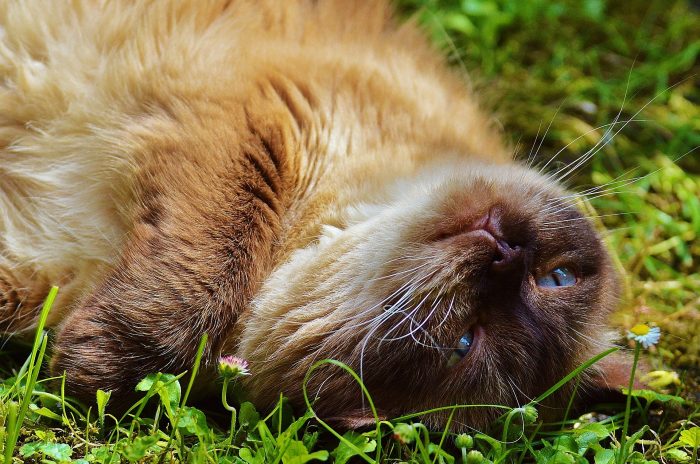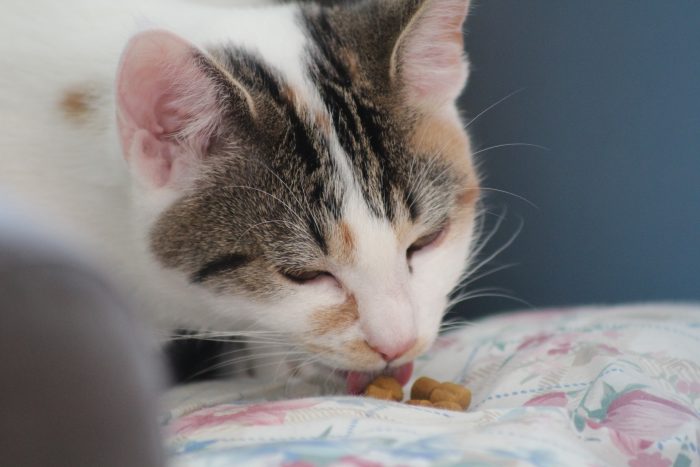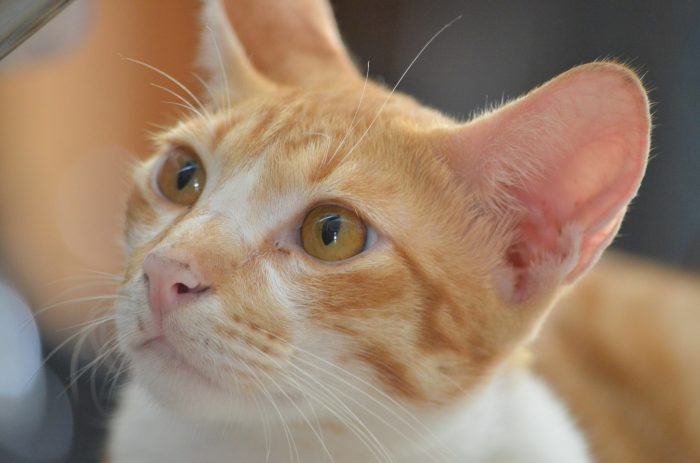While your cat might not be munching on potato chips or ordering Big Macs for dinner, they can still be overweight or obese, often without an owner even realizing it. According to the Association for Pet Obesity Prevention, over 50% of cats were either overweight or obese in 2011, and this number is increasing.
Just like in people, feline obesity can cause many other problems, many of which might put your cat’s health in danger. Cat obesity is on the rise, which is why it is important to understand why this disorder matters and what you can do to help your kitty lean up and live a healthy life.
What is Feline Obesity?
Cats are considered “obese” if their body composition consists of too much fat and not enough lean muscle. While obesity can occur in all kinds of cats, it is more likely to affect middle-aged cats as their metabolism slows down. In addition, indoor cats are more likely to become overweight or obese because they generally have less forms of exercise. A body composition test at the vet can tell you if your cat is obese.
What Causes Feline Obesity
As cats have become more domesticated, pet owners have aided in weight increase in their cats. While most pet owners have the best intentions, some habits are leading to this increased weight gain and resulting in more obese cats. Below are some of the most common pet owner actions that may cause feline obesity:
Free Feeding
A lot of cat owners set out dry food throughout the day for their kitties to munch on. Cats are genetically known as grazers, which means that they do benefit from more frequent, smaller meals, but this unlimited amount of food can be too much for some cats.
Carbohydrate-Rich Foods
Cats are natural carnivores, meaning that they thrive off diets high in fat and protein. Too often, consumer dry cat food is high in carbs and grains because it is easier and cheaper to make. Pair that with the free feeding, and obese cats end up eating too many carbs than is ideal. Some animal dieticians recommend a diet of 35-45% protein, 40% fat, and just a small percentage of carbs.
Too Many Treats
As sweet as your kitty may look gazing at you with those big eyes, excessive treats are one of the biggest factors in weight gain for cats. Unlike dry and wet cat food that has been optimized for their diets, cat treats are like the junk food of the pet world. Some treats are even manufactured with addictive enzymes to keep the cat craving more.
What to Do Instead
If your kitty is tipping the scale, there are a few things you can do today to get them on a healthier track. As always, consult with your veterinarian before making any radical diet changes.
Feed Smaller, More Frequent Portions
Instead of free feeding, try to feed your cat two to five small meals a day. Most house cats today are bred to digest cat food well, so commercial dry and wet food should suffice, but without the all-you-can-eat buffet at their fingertips, smaller portions throughout the day will help your cat’s digestion and metabolism.
Focus on the Protein
Before buying cat food, look at the ingredients. If a grain, such as corn, is listed as the first ingredient, it might not be the best choice for your furry friend. Corn is a cheap filler that a lot of food manufacturers use to cut costs.
Instead, try to buy foods that are protein-rich and emphasize that they are low-grain or grain-free. Wet food is usually higher in protein, which could be a good option for your cat. Some professionals even recommend a completely raw diet, but talk to your vet before implementing this major change.
Give Healthier Treats
Instead of turning to the consumer treats that are found in every pet food store, think about giving your cat healthy, high-protein treats like bits of chicken or fish. Most pet stores even sell freeze dried treats, which usually just have one ingredient — meat. These treats will still make your kitty happy, but are a healthier alternative.
Incorporate More Exercise
Indoor cats are at a higher risk of obesity because they generally get less exercise than outdoor cats. Make sure to give your cat at least 15 minutes of play time a day, and try to incorporate high-energy moves. Get them jumping and running around to burn those calories!
At the end of the day, cats (and all mammals) gain weight by consuming more calories than they burn. By leaning out your cat’s diet and making sure they get enough exercise, you can get them on the right track. Contact your vet for more information on how to optimize your cat’s healthy lifestyle.







